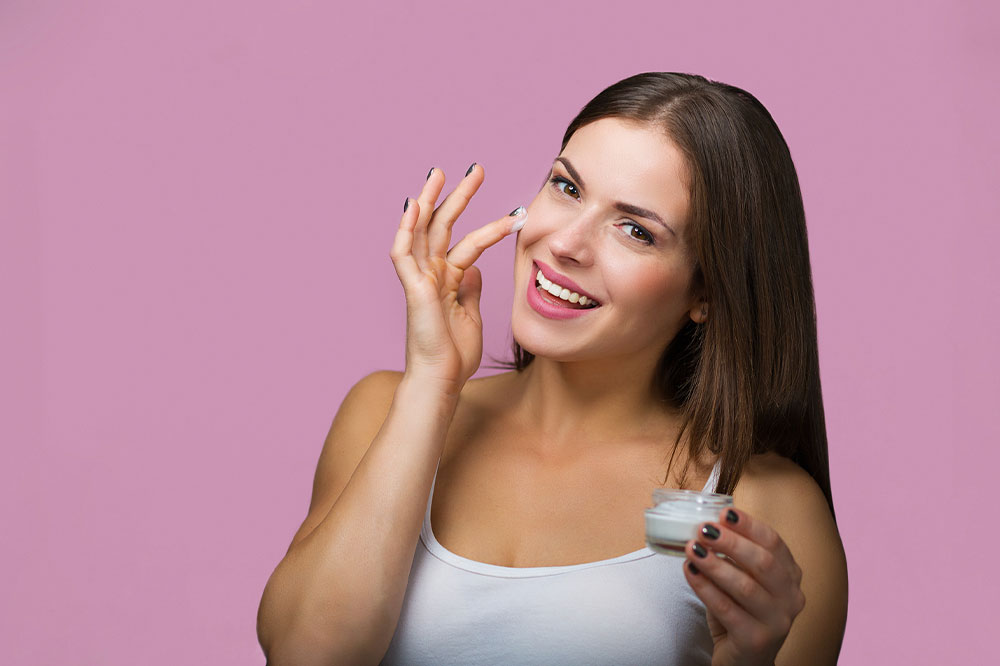
8 helpful tips for choosing the right anti-aging products
With an overwhelming range of anti-aging products available in the market, how do you know which ones will improve your skin’s appearance? You must first understand what ingredients work best for different skin types and conditions to reduce wrinkles. For example, you may consider factors like price, product labels, and conducting product patch tests to compare different products. This blog discusses eight valuable tips to help you choose anti-aging products that suit your needs.
What are anti-aging products?
Anti-aging products include a range of face wash, body wash, toners, serums, moisturizers, body lotions, etc., that help alleviate the physical signs of aging from your body.
Anti-aging products are essential to any skincare routine. They are designed to reduce facial wrinkles and improve the appearance of fine lines on the face and neck. These products often contain various natural oils and vitamins, like retinol and collagen, that help keep skin looking younger and refreshed throughout the day.
While anti-aging products can’t stop your skin from aging, they can help protect it from further damage by imparting hydration to delicate facial areas. Whether dry or oily skin, an anti-aging product is available to meet your needs.
Eight tips for picking the best anti-aging products
Pick a sunscreen
Common skin aging signs are wrinkles, sun spots, and fine lines. They are caused by dehydrated skin and prolonged sun exposure. To avoid this, apply sunscreen on the skin, even at home. Ensure the following conditions when selecting sunscreen:
- Look for an SPF (sun protection factor) of 30 or higher for protection against UVA and UVB rays (which may cause sunburn).
- Avoid sunscreens that contain artificial fragrances, harsh chemicals (like PFOA and acrylamide), alcohol, or preservatives (like parabens) if you have sensitive skin.
Recognize your primary concern
You should combat one anti-aging concern at a time. These concerns may range from wrinkles to inelastic skin, rough skin, and dull skin. However, no single product can address all signs of aging. Additionally, multiple products designed to address different issues simultaneously can cause more significant damage than benefits. Therefore, examining your skin type, understanding your concern, and choosing your product is necessary to avoid any side effects.
Choose a retinol-based cream
Retinoids are a compound derived from vitamin A. Vitamin A is a powerful antioxidant that helps stimulate collagen production and elastin support resulting in brighter, smoother, younger-looking skin.
Depending on your skin type, choose between retinol cream and serum. While creams are better suited for dry skin, serums are effective for reducing excess oil, opening skin pores, and treating wrinkles and acne.
Read product labels
Choose a product that mentions the following on its package label:
- Hypoallergenic (the commodity can still cause an allergic reaction, but there is less risk).
- Non-acnegenic or non-comedogenic (it does not cause acne).
- Customer service hotline (you can ask for queries).
Conducting a patch test
Before you apply a product to your face, make sure to do a patch test. This is an easy and effective way of knowing if it’s suitable for your skin. If you notice no visible side effects, it’s safe to use.
Price
Although branded products usually assure the highest-quality ingredients and results, they may be too expensive. Therefore, you must keep your budget in mind while selecting the right anti-aging product because cheaper, more effective alternatives are also available.
Skin type
Dry, acne-prone, sensitive, oily, and combination skin have different needs and must select suitable product formulas accordingly. For example, if you have dry skin, you must focus on creams that moisturize and nourish deep within the layers of the epidermis. On the other hand, combination skin may benefit from moisturizers with essential body oils.
Drop unrealistic expectations
Anti-aging skin care products, while helpful in slowing down the signs of aging, cannot deliver drastic results. Unfortunately, those too-good-to-be-true promises of looking ten years younger in one week or getting facelift-like results are false.
Essential ingredients to look for in anti-aging products
Antioxidants
Antioxidants are one of the key ingredients in anti-aging products because they help to protect the skin from free radical damage. Free radicals are unstable molecules that can damage cells and cause premature aging. Antioxidants help to neutralize free radicals and prevent them from causing damage. Antioxidants may also reduce inflammation, enabling the skin to regenerate and mend some damage.
There are many antioxidants, but some of the most common ones used in anti-aging products include vitamin C, E, and green tea extract.
Argireline
This peptide calms the muscles around wrinkles and fine lines, reducing their appearance. It helps prevent skin sagging, giving a more youthful look overall. This powerful compound may heal the skin over time by encouraging collagen production, improving elasticity, and delivering antioxidants. It also protects your skin against aging-related environmental stressors, like sun exposure and pollution.
Collagen
Collagen is the most abundant protein in our bodies, making up about 30% of the total protein amount. It’s what gives our skin strength and elasticity. Unfortunately, as we age, collagen production slows down, and we start to see aging signs like wrinkles and sagging skin. That’s why many people turn to anti-aging products containing collagen, hoping to turn back the clock. Moreover, many people notice effective results after a few uses.
Hydroxy acids
Hydroxy acids are a compound that effectively reduces the appearance of wrinkles and fine lines. They can be found in many anti-aging products, including serums, creams, and masks. These compounds work by increasing the production of collagen, helping keep skin looking firm and young. Hydroxy acids are also effective at exfoliating the skin, which may help brighten the skin complexion and reduce the appearance of age spots (small, dark skin spots).
Wrapping up
The bottom line is that there is no magic solution regarding anti-aging products. However, following the tips mentioned above, you can stack the odds in your favor of finding products that work well for you and help you look and feel the best. Thus, take your time, research, and be bold and experiment until you find a routine that works for you.


